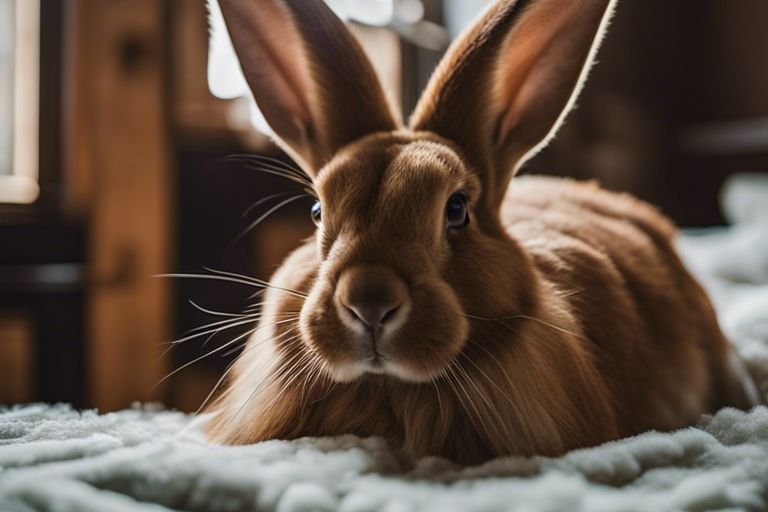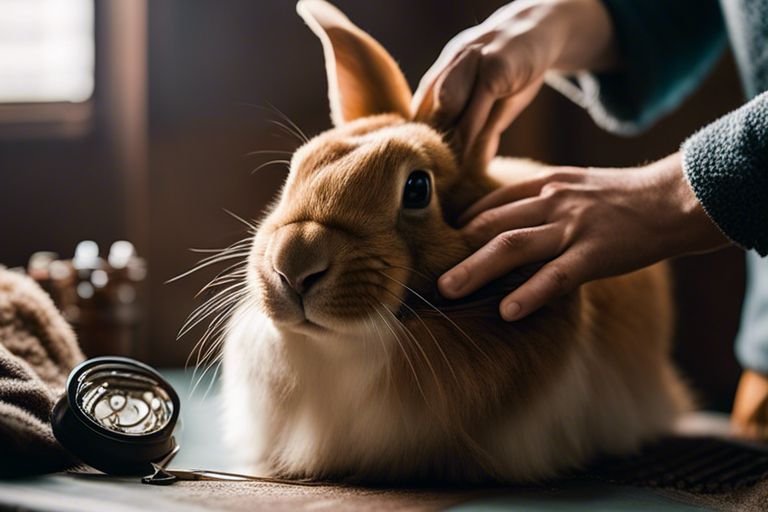Is your Flemish Giant rabbit experiencing discomfort due to matted fur? It’s important to address this issue promptly to prevent skin irritation, infections, and discomfort for your beloved pet. In this guide, we’ll discuss how to identify matted fur on a Flemish Giant rabbit and provide step-by-step instructions for treating it effectively. By following these tips, you can ensure that your rabbit stays happy, healthy, and free from the discomfort caused by matted fur.
Key Takeaways:
- Regular grooming is essential: Flemish Giant rabbits require regular grooming to prevent matting in their dense fur. This should be done at least once a week to keep their coat healthy and tangle-free.
- Spotting matted fur early is crucial: Regularly check your rabbit’s fur for any tangles or mats. Early detection can make treatment easier and prevent discomfort for the rabbit.
- Gentle handling is key: When treating matted fur, it’s important to handle your rabbit gently to avoid causing them distress or pain. Use a soft brush or comb and work through the mats carefully to avoid pulling on the rabbit’s skin.
- Trimming may be necessary: In severe cases of matted fur, trimming may be necessary to remove the tangles and prevent them from getting worse. However, this should be done by a professional or someone with experience in rabbit grooming to avoid accidental injury to the rabbit.
- Consult a veterinarian if necessary: If you are unsure about how to treat matted fur or if the mats are causing discomfort or skin issues for your rabbit, it’s best to consult a veterinarian for professional advice and treatment.
Identifying Matted Fur
Assuming you are a proud owner of a Flemish Giant rabbit, it is important to be able to identify matted fur on your pet. This is especially crucial if you want to keep your bunny looking healthy and feeling comfortable. If left untreated, matted fur can lead to a range of issues, including skin irritation and potential health problems. Can You Shave a Rabbit? Bunny Grooming Done Right This comprehensive guide will help you understand how to spot and treat matted fur on a Flemish Giant rabbit.
Factors Contributing to Matted Fur
Matted fur in Flemish Giant rabbits can be caused by a variety of factors, with long hair length, poor grooming, and inadequate diet being the primary culprits. If your rabbit has long, thick fur, it is more prone to tangling and matting. Additionally, if your rabbit is not groomed regularly, dead fur and debris can accumulate, leading to mats. Finally, an inadequate diet can result in the fur becoming dry and brittle, making it more likely to tangle and mat. Perceiving these factors can help you take proactive steps to prevent matted fur in your Flemish Giant rabbit.
Key Areas to Check
Contributing to the occurrence of matted fur are the neck area, behind the ears, and the hindquarters. These areas are more prone to matting due to the natural movements of the rabbit and the way the fur grows in these regions. Regularly checking and grooming these areas is crucial in preventing and treating matted fur. With the right knowledge and tools, you can effectively address these key areas and keep your Flemish Giant rabbit’s fur in top condition.

Grooming Tools and Preparation
If you own a Flemish Giant rabbit, it’s essential to have the right grooming tools and to properly prepare your rabbit for grooming. Regular grooming is crucial to prevent matting and keep your rabbit’s fur in good condition.
Essential Grooming Equipment
The most important grooming tool for a Flemish Giant rabbit is a high-quality, stainless steel comb with wide-spaced teeth. This type of comb is effective at removing tangles and matted fur without causing discomfort or skin irritation. Additionally, a gentle slicker brush can be used to remove loose fur and prevent mats from forming. It’s also dangerous to use a sharp or unsuitable tool, as it can cause injury to your rabbit’s delicate skin.
Preparing Your Flemish Giant for Grooming
Essential to preparing your Flemish Giant for grooming is to create a calm, quiet environment to minimize stress. Before starting the grooming session, spend some time bonding with your rabbit to help them relax. It’s also a good idea to provide some tasty treats as a positive reinforcement during the grooming process.
Plus, it’s important to regularly check your rabbit’s fur for any signs of matting or tangles, especially in areas where the fur is longer or denser. This can help you catch and address any grooming issues before they escalate.
How-to Remove Mats
To remove mats from a Flemish Giant rabbit, it is important to do so carefully to avoid causing any discomfort or harm to the rabbit. Here are some tips for gently detangling and safely cutting out mats from your rabbit’s fur.
Tips for Gentle Detangling
When detangling mats from your Flemish Giant rabbit’s fur, it is important to be gentle to avoid causing any pain or discomfort to the rabbit. Use a soft-bristled brush to gently work through the mat, starting from the outer edges and slowly working your way in. Be patient and take your time to avoid pulling on the rabbit’s fur.
- Use a soft-bristled brush
- Start from the outer edges of the mat
- Be patient and gentle
Recognizing and addressing mats early can prevent them from becoming larger and more difficult to remove.
Safely Cutting Out Mats
Safely cutting out mats from your Flemish Giant rabbit’s fur requires care and precision to avoid accidentally cutting the rabbit’s skin. Use blunt-tipped scissors to carefully cut through the mat, working slowly and carefully to ensure that you only remove the tangled fur without harming the rabbit.
It is important to exercise caution when using scissors near your rabbit’s skin, as any sudden movement from the rabbit can result in accidental injury. If you are unsure about safely cutting out a mat, it is best to seek help from a professional groomer or veterinarian.

Preventing Future Mats
Keep your Flemish Giant rabbit’s fur healthy and tangle-free by implementing a regular grooming routine and providing the right diet and environment. By taking these preventive measures, you can help minimize the risk of your rabbit developing mats and keep their coat in top condition.
Routine Grooming Steps
Steps such as brushing your Flemish Giant rabbit’s fur at least once a week with a suitable brush can help prevent mats from forming. Pay special attention to areas such as the hindquarters and under the chin, where mats are most likely to occur. Additionally, regular nail trimming and ear cleaning contribute to overall grooming and wellbeing.
Regular grooming is not only essential for keeping your rabbit’s coat mat-free, but it also promotes bonding between you and your pet. By incorporating grooming into your regular routine, you can keep an eye out for any potential issues such as overgrown nails or skin irritations, and address them promptly.
Diet and Environment Considerations
Preventing matting in your rabbit’s fur also involves ensuring they have a proper diet and living environment. A diet rich in hay and fresh vegetables, along with access to clean water, can contribute to healthy fur growth and minimize the risk of mat formation. Therefore, it is important to provide a balanced diet and a clean living space to support your rabbit’s overall health.
Grooming your Flemish Giant rabbit regularly and ensuring they have a balanced diet and a clean living environment are key factors in keeping their fur matt-free and maintaining their wellbeing. By paying attention to these aspects of care, you can help prevent future matting issues and ensure your rabbit’s happiness and health for years to come.
Conclusion
On the whole, matted fur can be a common issue for Flemish Giant rabbits, but with proper grooming techniques and regular monitoring, it can be easily spotted and treated. By regularly brushing and grooming your rabbit, you can prevent mats from forming and keep their coat healthy. When mats do occur, it is important to gently and carefully remove them using the right tools and techniques to avoid causing discomfort or injury to your rabbit. With patience and diligence, you can keep your Flemish Giant rabbit’s fur in good condition and prevent any unnecessary discomfort or health issues.
FAQ
Q: What are the signs of matted fur on a Flemish Giant rabbit?
A: The signs of matted fur on a Flemish Giant rabbit include tangles, clumps, and knots in the fur, which may be especially noticeable in the rabbit’s hindquarters and underbelly. The fur may appear dull and unkempt, and the rabbit may show signs of discomfort or irritation, such as excessive scratching or grooming in the affected areas.
Q: How can I treat matted fur on a Flemish Giant rabbit?
A: To treat matted fur on a Flemish Giant rabbit, it’s important to start by carefully and gently removing the tangles and knots with a specialized rabbit grooming brush or comb. Take care to not pull or tug at the fur, as this can cause discomfort and potential harm to the rabbit’s skin. In severe cases, it may be necessary to carefully trim the matted fur with scissors, but this should be done by a professional or someone experienced in rabbit grooming to avoid accidental injury to the rabbit.
Q: What steps can I take to prevent matted fur on my Flemish Giant rabbit?
A: To prevent matted fur on a Flemish Giant rabbit, regular grooming is essential. Brushing the rabbit’s fur at least once a week can help to prevent tangles and mats from forming. It’s also important to ensure the rabbit’s living environment is clean and free from debris that can become trapped in the fur. Additionally, providing a healthy diet and plenty of exercise can help to maintain the rabbit’s overall coat health and reduce the likelihood of matted fur. If you notice any signs of matted fur, it’s important to address it promptly to prevent discomfort and potential skin issues for your rabbit.
